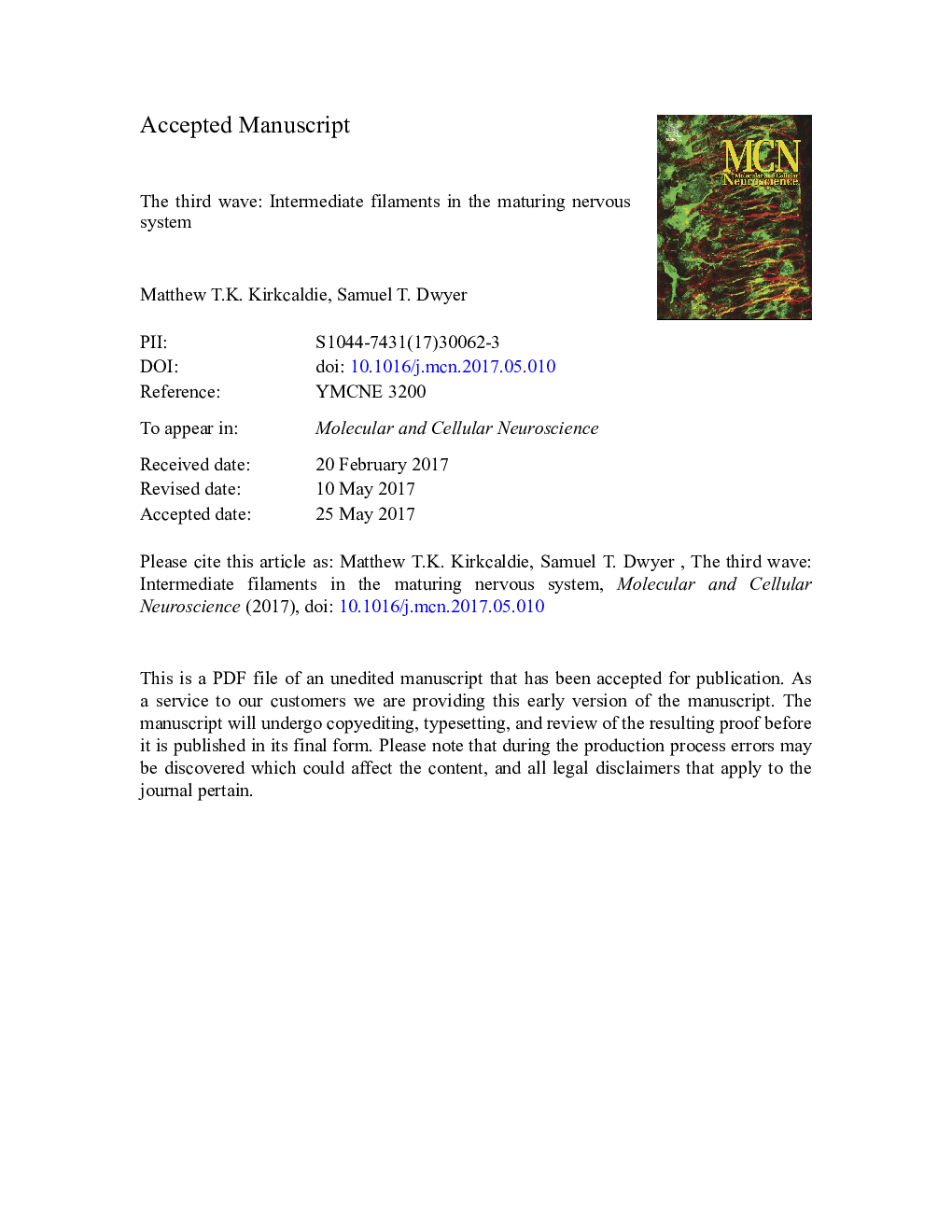| Article ID | Journal | Published Year | Pages | File Type |
|---|---|---|---|---|
| 8478434 | Molecular and Cellular Neuroscience | 2017 | 40 Pages |
Abstract
Intermediate filaments are critical for the extreme structural specialisations of neurons, providing integrity in dynamic environments and efficient communication along axons a metre or more in length. As neurons mature, an initial expression of nestin and vimentin gives way to the neurofilament triplet proteins and α-internexin, substituted by peripherin in axons outside the CNS, which physically consolidate axons as they elongate and find their targets. Once connection is established, these proteins are transported, assembled, stabilised and modified, structurally transforming axons and dendrites as they acquire their full function. The interaction between these neurons and myelinating glial cells optimises the structure of axons for peak functional efficiency, a property retained across their lifespan. This finely calibrated structural regulation allows the nervous system to maintain timing precision and efficient control across large distances throughout somatic growth and, in maturity, as a plasticity mechanism allowing functional adaptation.
Related Topics
Life Sciences
Biochemistry, Genetics and Molecular Biology
Cell Biology
Authors
Matthew T.K. Kirkcaldie, Samuel T. Dwyer,
